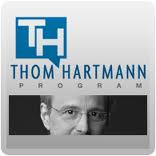
Tuesday night,
I appeared on the Last Word with Lawrence O’Donnell to talk about Elizabeth Warren, the rise of progressives within the Democratic Party, and what this means for Bernie Sanders’ presidential campaign.
At one point in our discussion, the conversation turned to whether Bernie represents the closest thing to an Elizabeth Warren candidacy.
I said he does, but
I also pointed out that he has the potential to be so much more than just a fill-in the blank progressive candidate.
That’s right: Bernie Sanders could be the next FDR. Let me explain.
When FDR took over the White House in 1933, America was in dire straits. Two straight decades of Republican rule culminating in the Great Depression had decimated what remained of the middle-class.
The superrich dominated the political system, Wall Street was a giant deregulated casino, workers had no union rights, and unemployment was rampant. And to make matters worse, many of the protections that we take for granted today, like, for example, Social Security, didn’t yet exist.
So FDR went ahead and oversaw what remains, with the probable exception of the Civil War, the most radical transformation of American democracy in our history: the New Deal.
He signed the Wagner Act, giving workers the right to collectively bargain with their bosses.
He created the Works Progress Administration, or WPA, and the Civilian Conservation Corps, or CCC, which provided jobs for millions of unemployed Americans and turned the government into the employer of last resort.
He created the Securities and Exchange Commission and signed the Glass-Steagall Act, which clamped down on Wall Street gambling and made the banking industry boring, safe, and sustainable.
He also signed the Social Security Act which created the backbone of the modern day welfare state and, for the first time, made it possible for all Americans to retire with a pension.
But the New Deal was bigger than just a collection of acts and agencies. What made it so important in the long run was that it created the preconditions for an American middle-class.
You, middle-classes are not “natural” in a deregulated capitalist economy. They have to be created, created with regulations, unions, and smart trade policy.
In its natural state, capitalism is a lot like feudalism. There is a small sliver of superrich who rule over everyone else, followed by a slightly larger class of middle-managers and professionals. The vast majority of people, though, fall into the category of working poor, and they’re basically serfs who have no power whatsoever.
This is what American society looked like before FDR became president. But after FDR’s time in office, American society was totally different.




